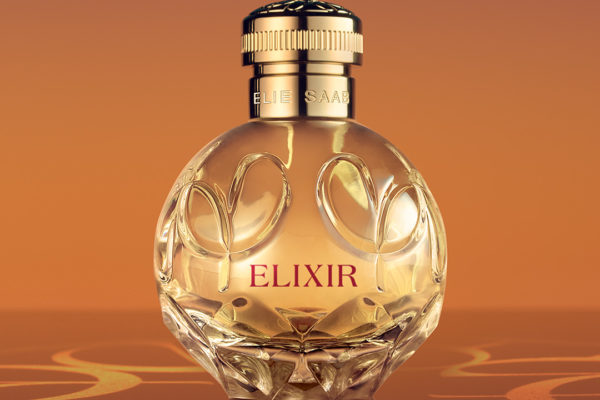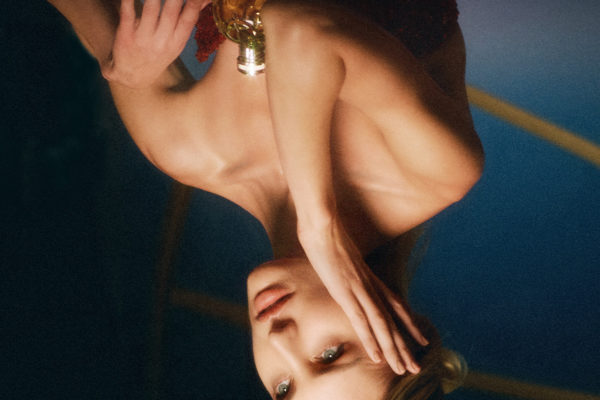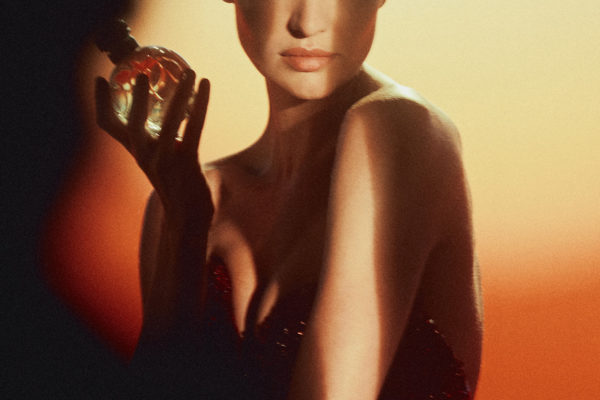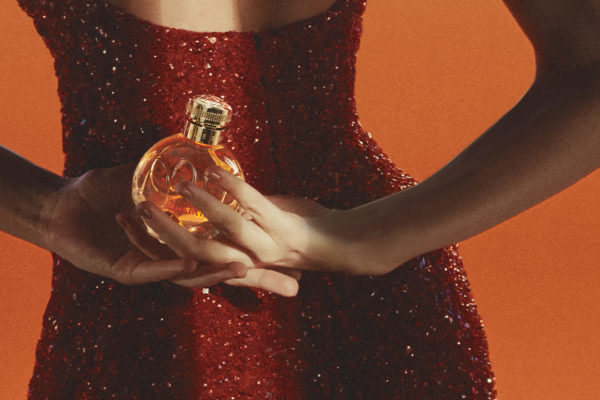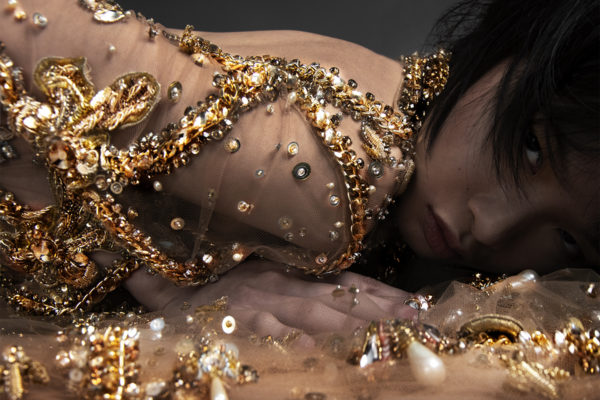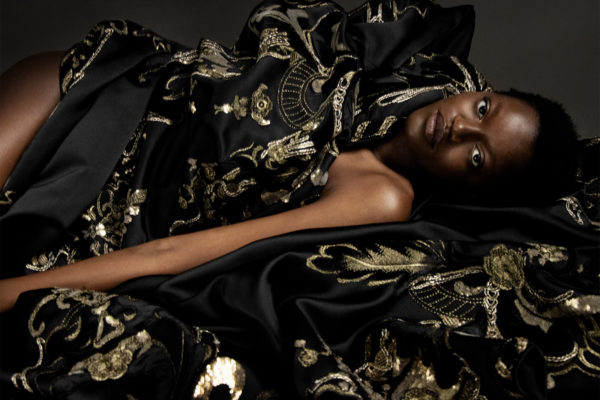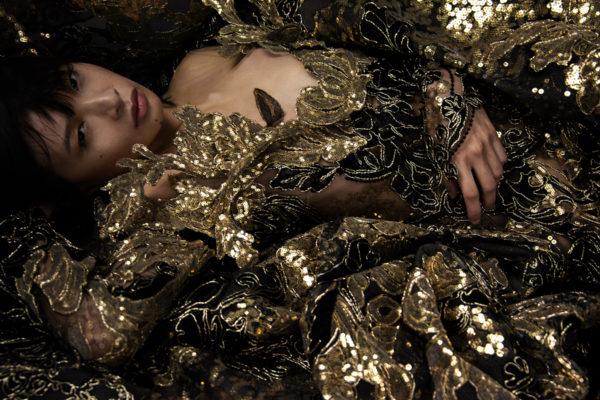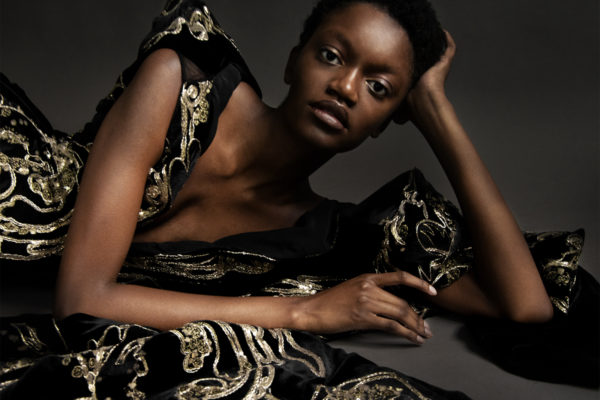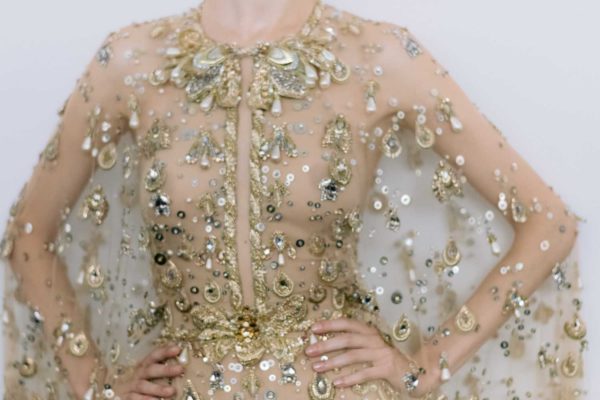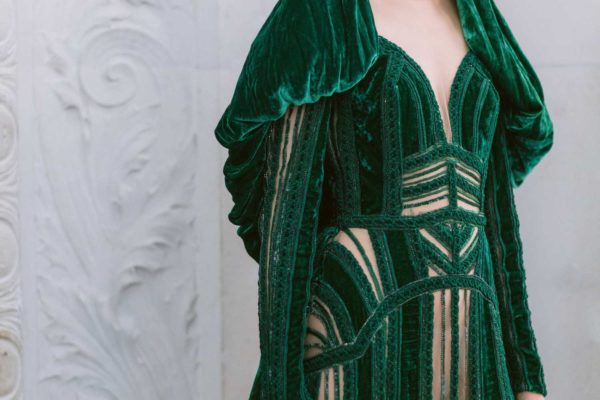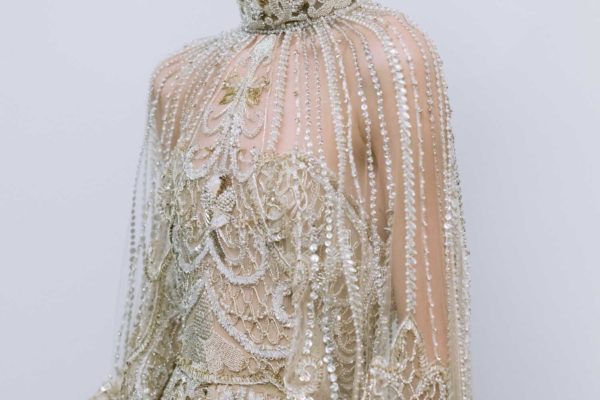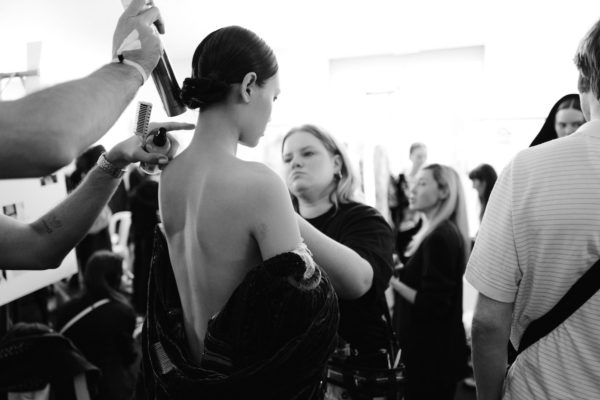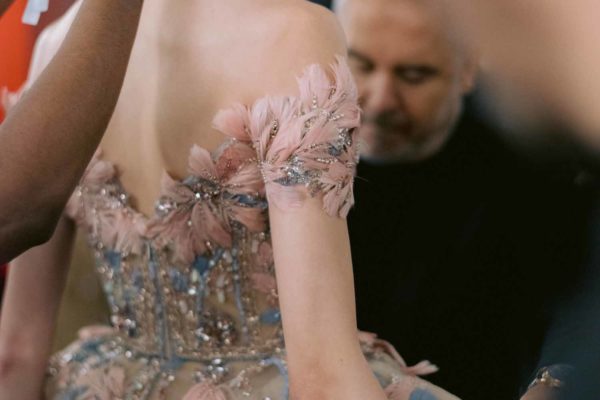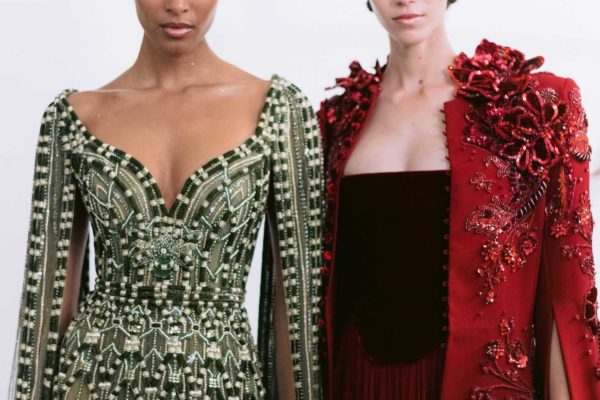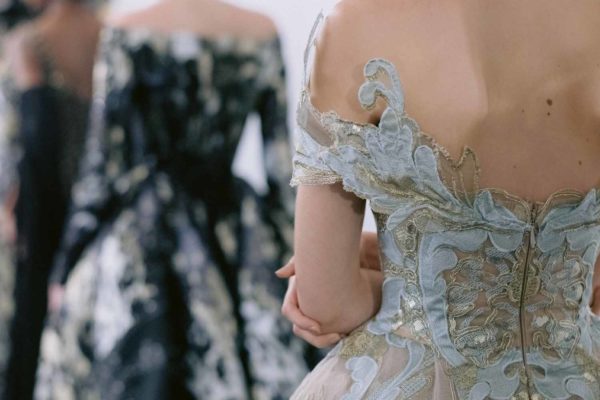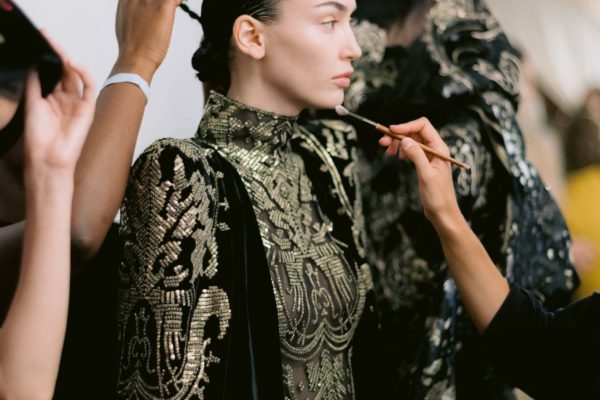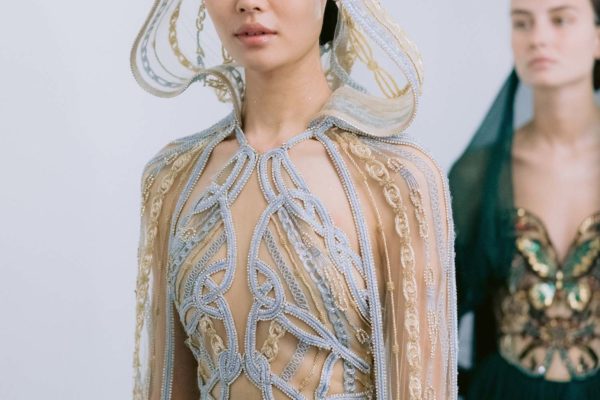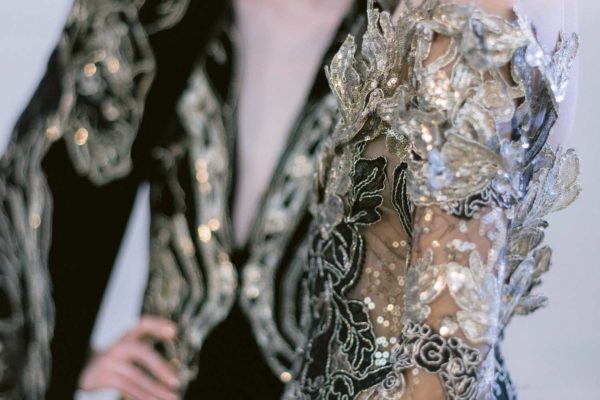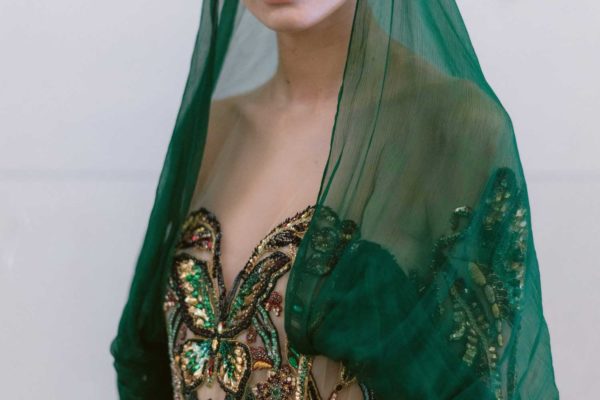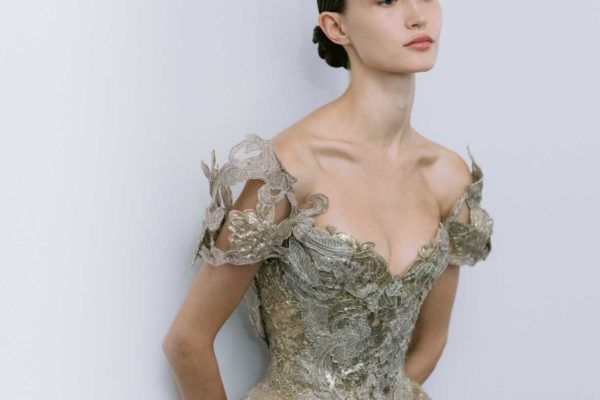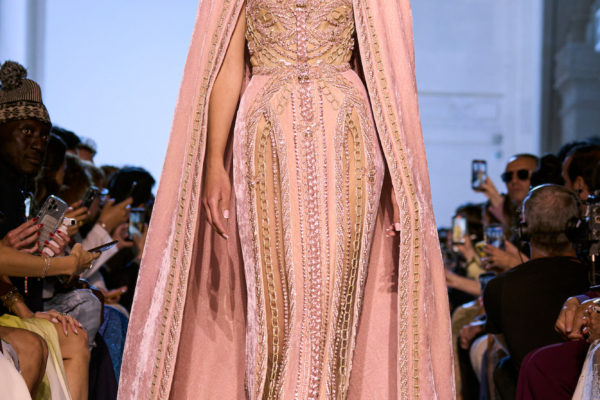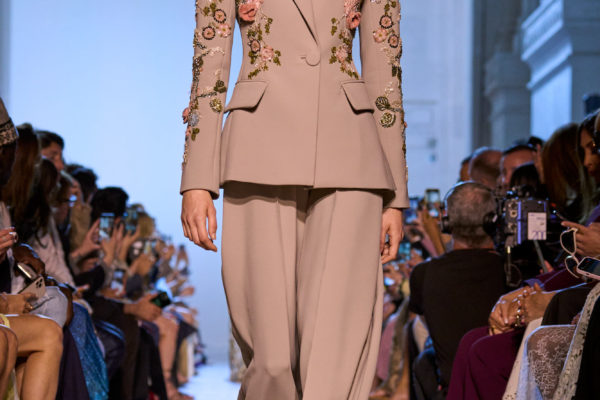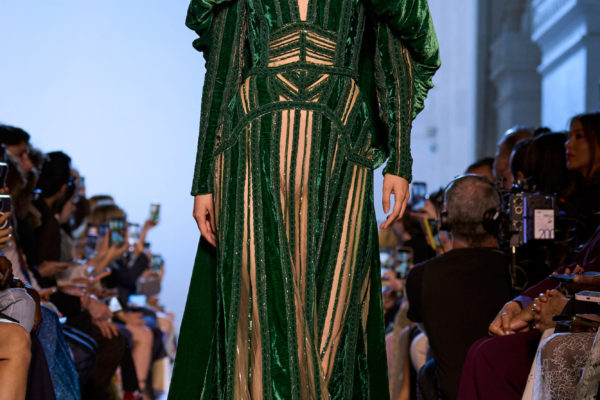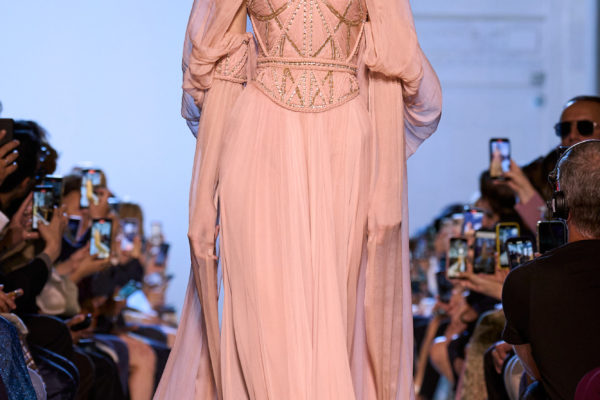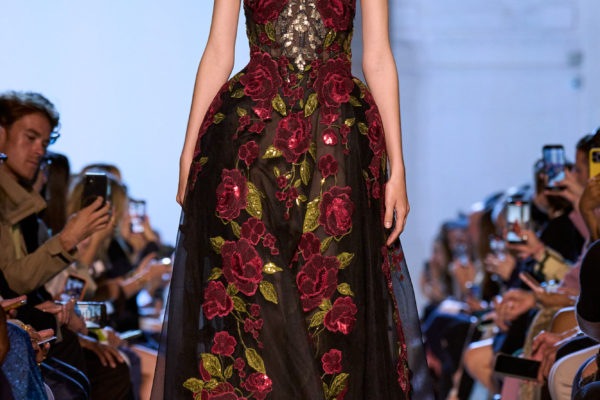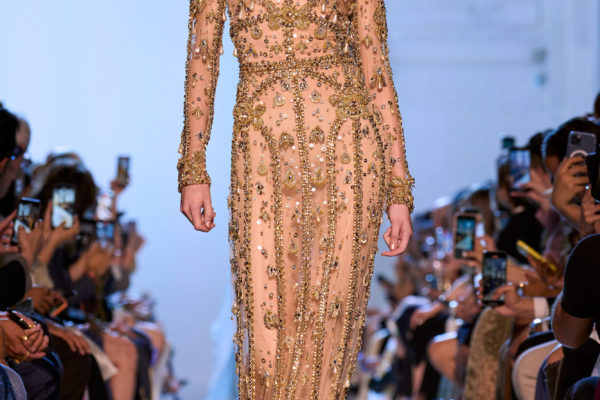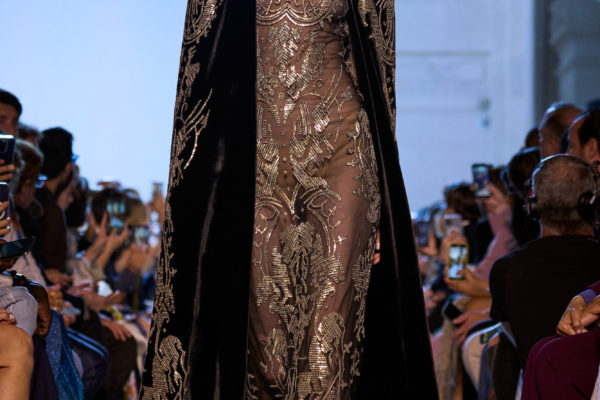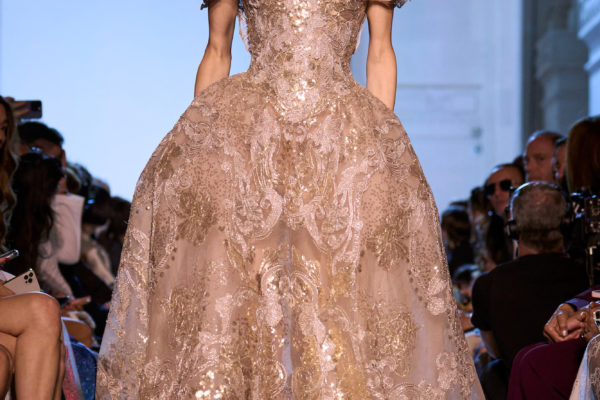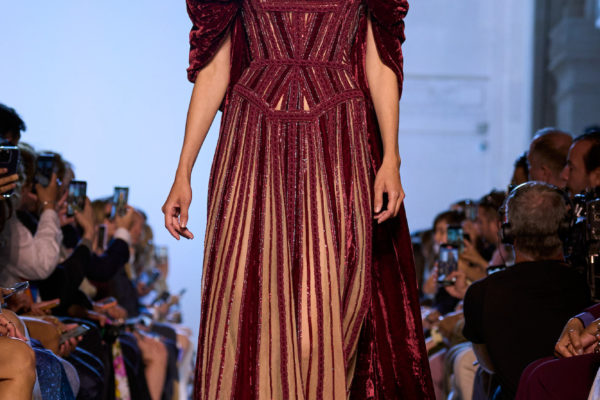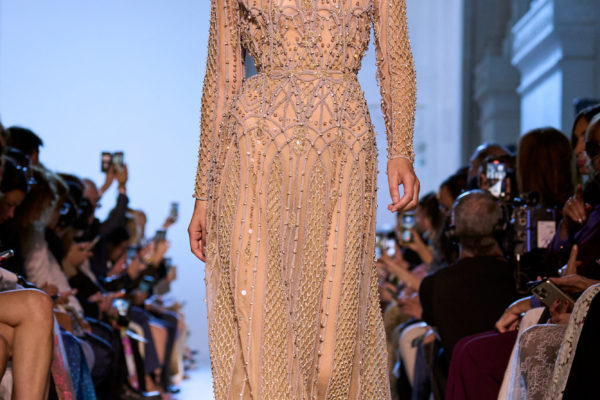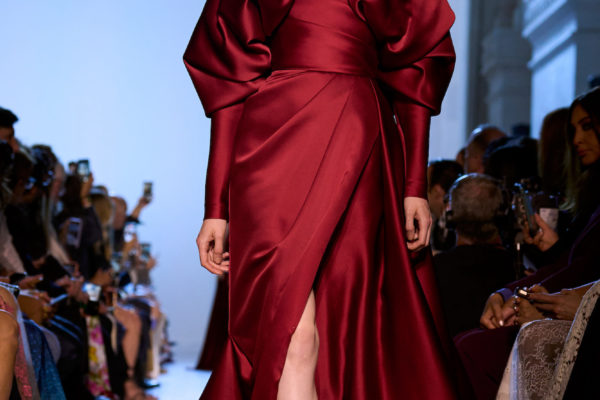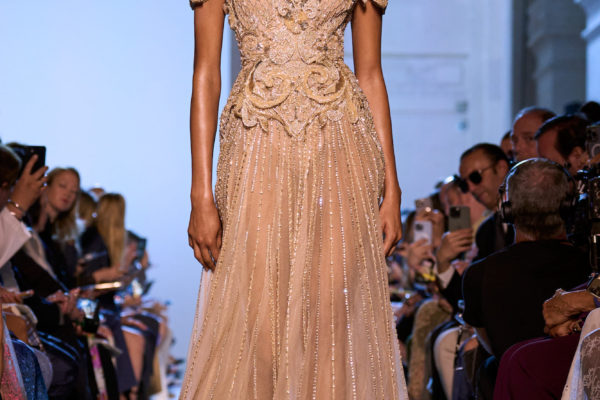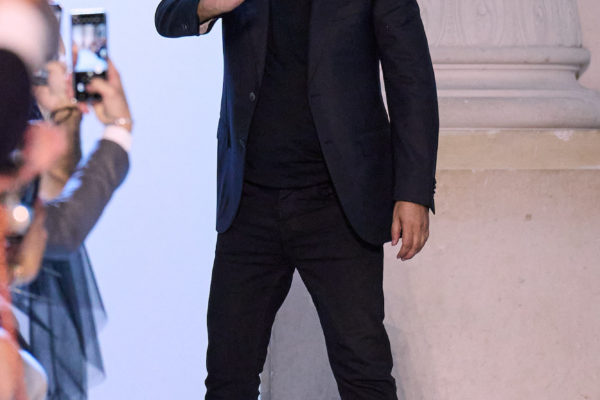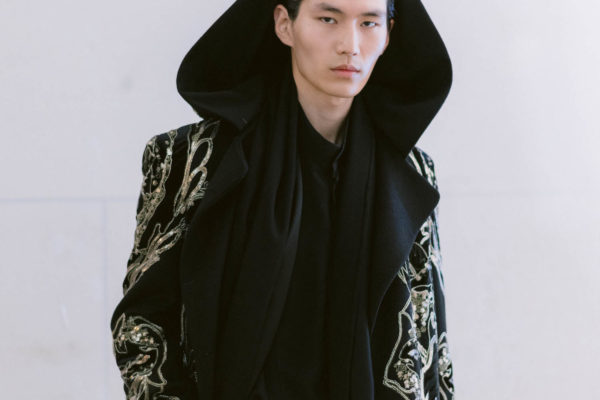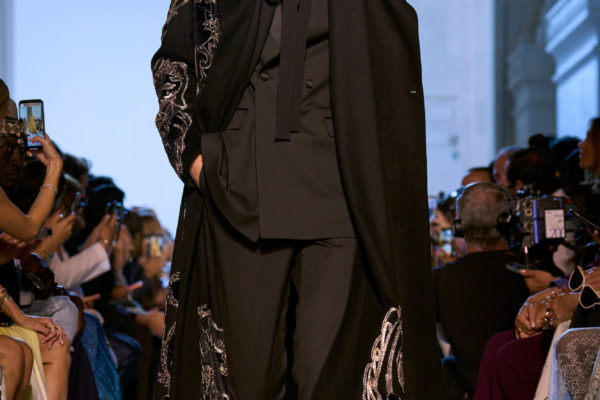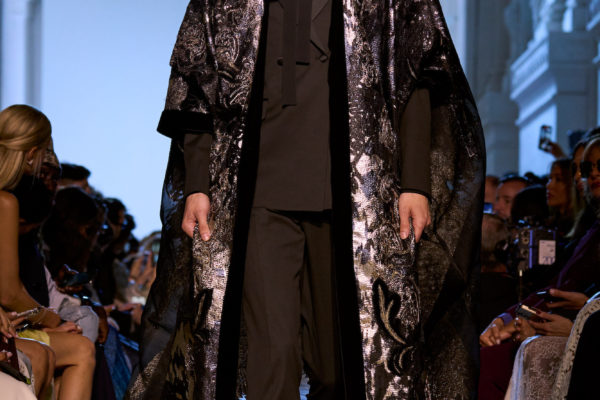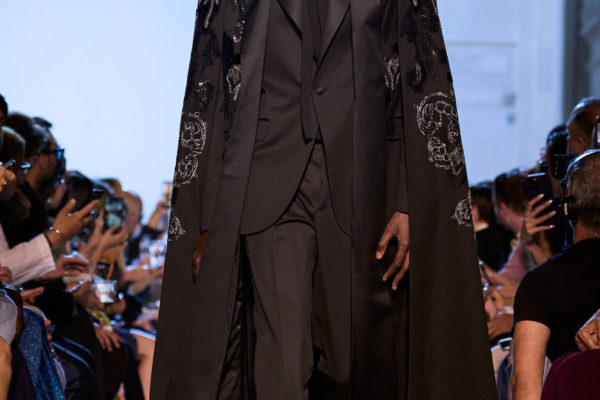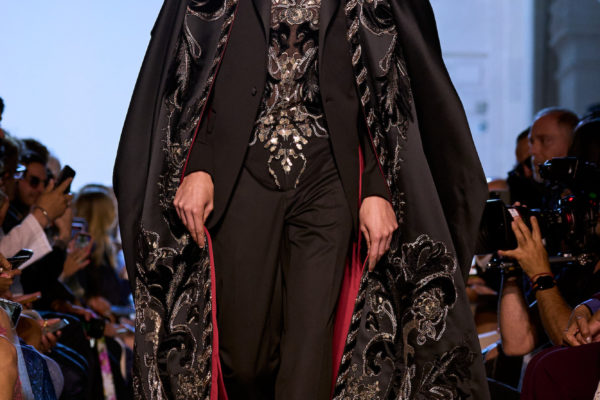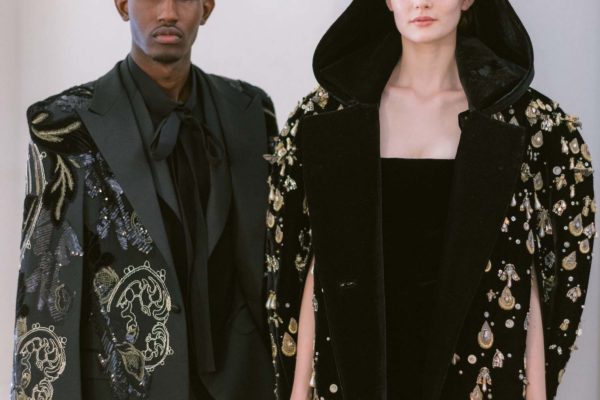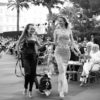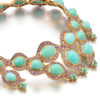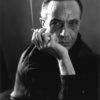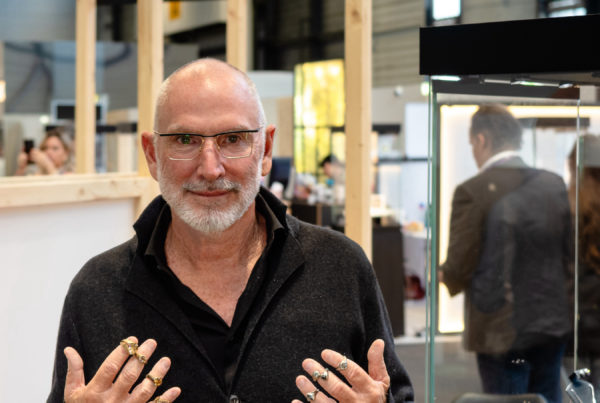Elie Saab and Elie Saab Jr: time to pass on the legacy
After the Autumn-Winter 2023/24 haute couture show, Elie Saab, the founder of the fashion house that bears his name, and his son Elie Saab Jr, talked about the present and, above all, the future. The couturier, who has been making women beautiful since 1982, has handed over the reins of his brand to his son. He remains artistic director. A two-voice interview. Isabelle Cerboneschi. Style & photo shoot: Buonomo & Cometti.

For decades, Elie Saab has been the favourite designer of princesses and stars who walk the red carpet. It was thanks to one of them, the actress Halle Berry, who won an Oscar in 2002 wearing an Elie Saab dress, that his name began to be known the world over. “It was a huge media coup. We had already started doing ready-to-wear, but we were mainly a fashion house that dressed princesses and well-off women. From that moment on, the name took on a popular dimension”, confides the couturier.
According to his authorised biography, Elie Saab was a precocious child: he began drawing models, patterns and cutting dresses for his sister from his mother’s tablecloths and curtains at the age of 9. In 1982, at the age of 18, he opened his first workshop in Lebanon. The fame of this young couturier began to spread beyond the borders of his country in the 90s, and in 1996 he was invited by the Camera nazionale della moda to present his collections in Rome during the Alta Moda Fashion Week. In 1999 Elie Saab walked the catwalk for the first time during the Paris couture week, and opened an office in the French capital the following year. In 2002, he was named a “corresponding member” of the French haute couture and fashion federation. Two years later, he launched his ready-to-wear line and moved his headquarters to Beirut. Since then, this father of three boys has oscillated between the two cities.
Elie Saab has become much more than a family name: it’s the name of a global brand known not only in the world of couture, ready-to-wear and wedding dresses, but also, since 2011, in perfumery and interior design. Because his son Elie Saab Jr has worked alongside him for decades, the fashion designer has decided to hand over the reins of the company to him. He remains artistic director.
To mark this handover, Elie Saab wanted to do an interview with his son. All that remained was to make his wish come true…
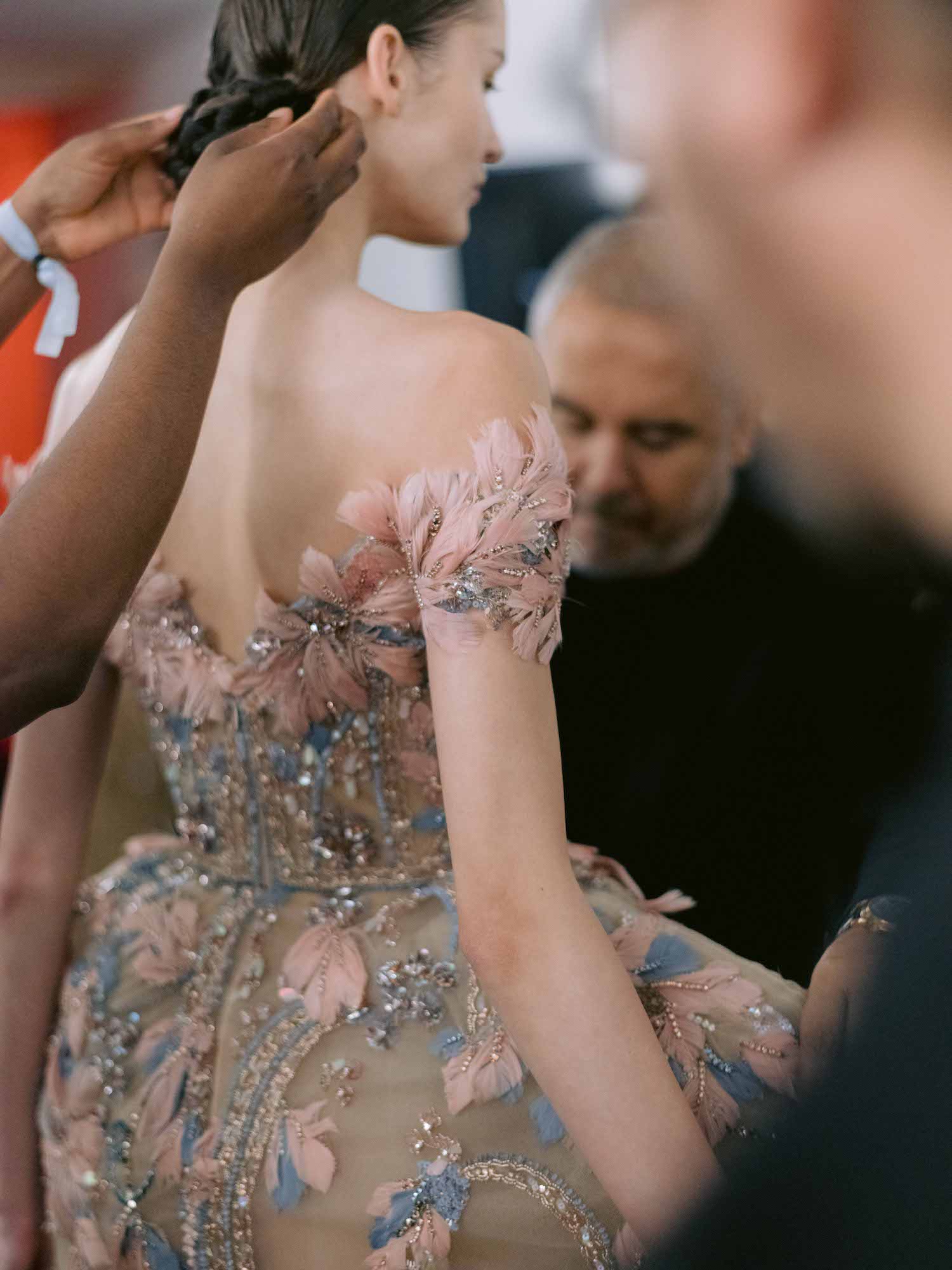
INTERVIEW
Mr Saab, you opened your workshops in 1982, at the age of 18, in the midst of the Lebanese civil war. What gave you the strength to carry on and climb to the top?
Elie Saab : Perhaps it was the fact that, at the age of 18, I felt confident that I had created a product that I could compete with. In reality, I started working much earlier and when I founded my first atelier in 1982, I was sure that women wanted to wear my dresses and that I could go much further.
In a 2010 interview, you told me that you dreamt of dressing women when you were still a child and that at the age of 9 you were cutting dresses for your sister from your mum’s curtains and tablecloths. You started out as a self-taught dressmaker. How did this vocation come about?
Elie Saab: It’s something that was born with me. Even I sometimes can’t explain it. I felt very early on that I had a vision and that I could become a fashion designer.
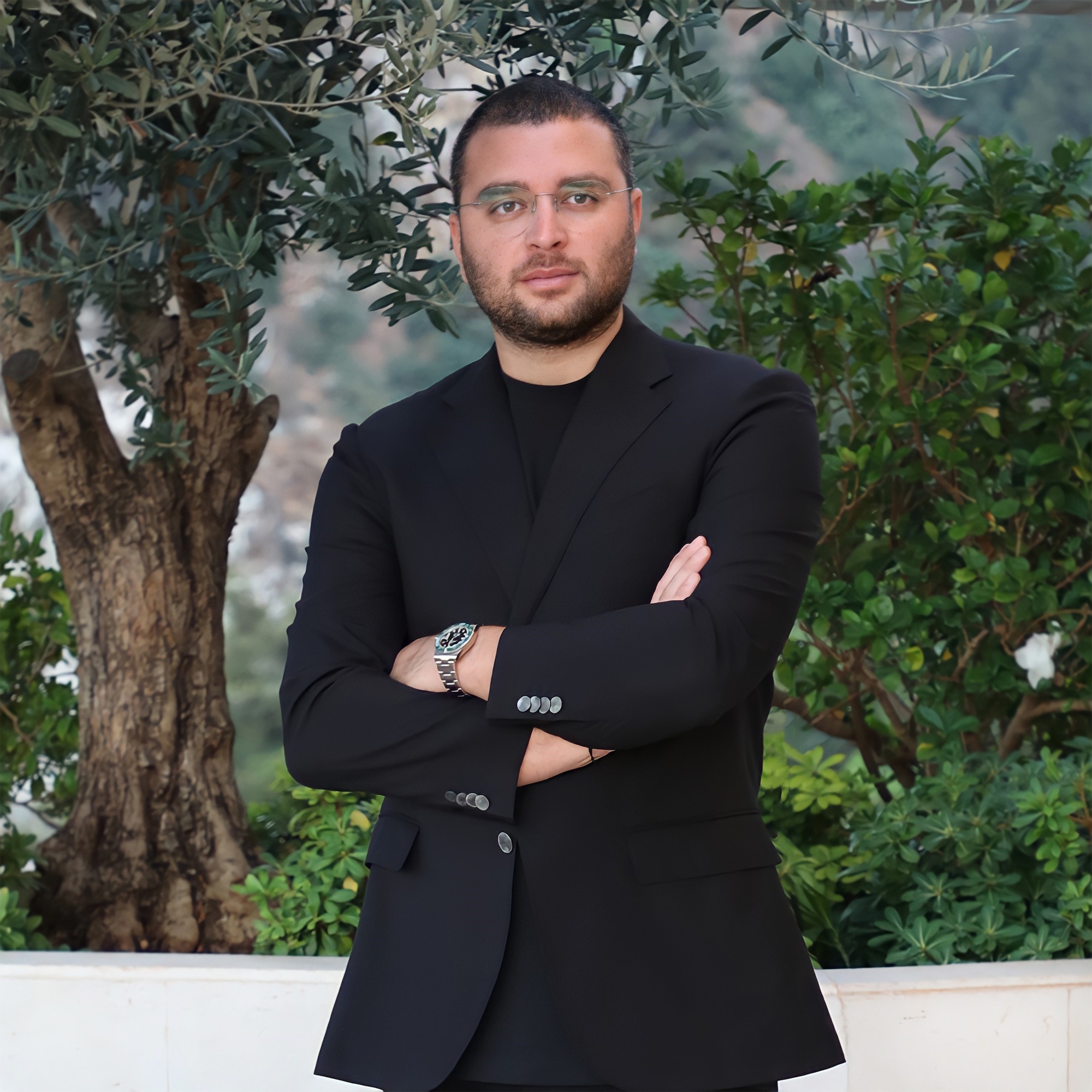
And Elie Saab Jr, what gave you a taste for couture?
Elie Saab Jr: I grew up with it, even though I was never forced into it. What drew me to work with my father was seeing the extent to which he was committed to developing the company. It became a mission, my mission. We both want to make this company a global business and not just a fashion house. That’s what we’ve managed to achieve over the last few years by developing not only the couture and ready-to-wear activities, but also children’s clothing, accessories, watches and a whole world linked to the home and furnishings. Not to mention the various property partnerships we have developed in Asia, Europe, the United States and South America: twelve in the space of three years! The Elie Saab brand has become a benchmark in the world of furniture branded real estate. And this is just the beginning of our expansion.
How far have you got in developing your fragrances?
Elie Saab Jr : This is the first brand extension that we have made outside of fashion, and it has been a huge success. Today our fragrances are distributed in over 10,000 points of sale worldwide. In many countries, we are in the top 3 or top 5. This reassures us that the brand has considerable scope for expansion, in every country. Perfume allows us to think about what we can offer with ready-to-wear and with all our product categories. We already have three lines that appeal to all types of women. Le Parfum remains the mainstay of our business. Girl of Now is more dynamic, aimed at a younger clientele. The third range, which we have just launched and which is called Elixir, takes a more sensual approach to perfume. We have some wonderful surprises in store for our customers in the years to come.
And what about your boutiques?
Elie Saab Jr: Over the last two years, we’ve expanded Elie Saab’s presence in a number of countries where we weren’t present before. Before the Covid crisis, we had five shops: Beirut, Paris, London, Dubai and New York. In the space of two years, we have developed our presence in the Middle East, with shops in Abu Dhabi, Saudi Arabia and Qatar, as well as in Europe, opening a shop in Milan and another in Monaco this summer, not forgetting our seasonal shops in Saint-Tropez and Saint-Barthélémy. Today, Elie Saab has twelve shops, seven of which have been opened in the last two years, and the idea is to continue this expansion.
Are you considering to develop a make-up and cosmetics line
Elie Saab Jr: It’s part of our plans, but it’s not imminent. Above all, we want to consolidate what we have already achieved and strengthen the pillars on which the brand is based. When the time comes, there will be other development opportunities that we are already working on. It has taken us four years to prepare our latest developments. We are in the process of designing the next ones. We have a lot of ambition, and we can’t afford to stop where we are.
Mr Saab, you have put Lebanon on the fashion map. What has changed in the world of fashion since you started?
Elie Saab: A lot, but I’d like my son to start answering you.
Elie Saab Jr: When my father started out, there was no fashion culture in Lebanon. It’s thanks to him that today we see many designers and couturiers of Lebanese origin showing their collections in Paris. My father worked in such a way that he managed to break the glass ceiling: he proved that a Lebanese couturier could reach an international level. When he decided to expand beyond the borders of his country, he chose Italy as his first port of call. He had to make people understand the philosophy of the woman he represented. At the time, the world was not global and our Middle Eastern culture was still relatively unknown.
Elie Saab : We arrived at the right time. I took a lot of my culture with me. With my presence at Fashion Weeks, I helped people to understand who Arab women really are, and their demands in terms of quality and shape. I’ve opened a door to the Middle East for French and international fashion houses. These are countries where women benefit from a strong purchasing power. When I arrived in Rome, I wasn’t a beginner: I already had success and a loyal clientele. But I wanted to make a name for myself internationally.
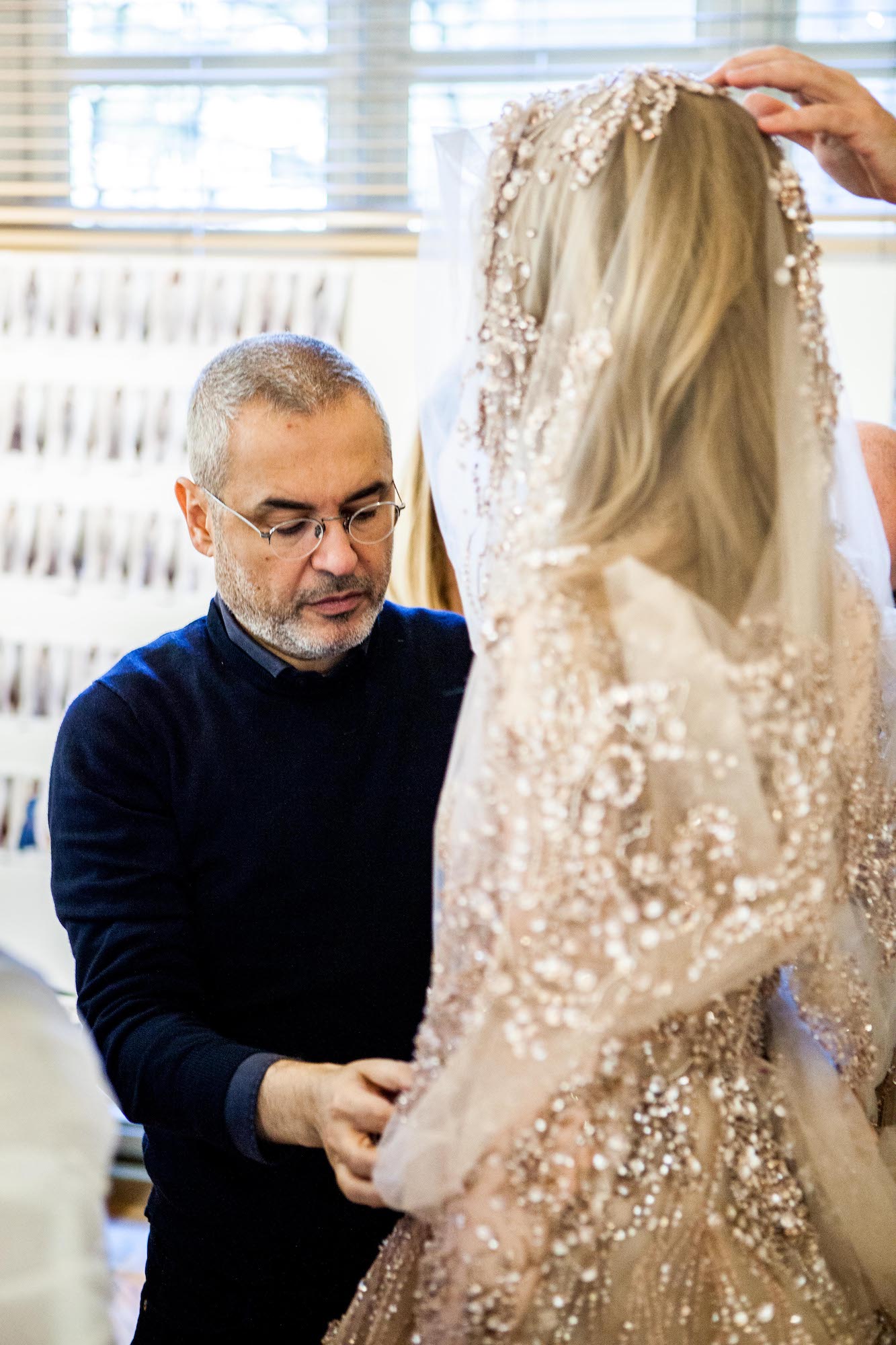
Since you started out, you have never created collections that could be called “oriental”.
Elie Saab : Because I’ve never drawn on Oriental tradition to create my collections. From day one, I presented a very cosmopolitan product. That’s what Arab women wanted. They didn’t want to be transformed into Scheherazade (laughs)! Their goal is to be modern, feminine, chic and elegant.
One of your signatures is your art of embellishing women, whatever their figure. You sculpt their bodies with your dresses and make them more beautiful. What is your secret?
Elie Saab : That is our strength. Our creations make women want to reveal their femininity: we respect their curves and their beauty. The secret is simply the cut, which is calculated to the millimetre. A cut can change everything.
Until 1996, you were best known in Lebanon and neighbouring countries. Then you presented your collection in Rome during Alta Moda. Is it fair to say that your international career began that year?
Elie Saab: I presented my first collection in 1982 in Beirut and that enabled me to launch my brand in the Arab countries. When I showed in Rome in 1996, it was as if the same thing was happening all over again, except that this time it enabled European women to discover my creations.
In 2000, you moved to Paris, and in 2002 you became a corresponding member of the Haute Couture and Fashion Federation. Paris was your dream?
Elie Saab: Our show in Rome had a purpose: to study the market before starting to produce a ready-to-wear line in Milan. That time in Rome was very important in my career: it allowed me to test the waters in Europe. But I also wanted to make a name for myself with the international press who attend Paris Fashion Week. We presented our first collection in Paris in 1999, then in 2000 we opened a Parisian office dedicated to couture, before opening our first boutique in the french capital in 2006. Paris was my ultimate goal, indeed.
You’ve passed on the torch to your son. How do you hope he will continue this story of yours? And Elie Jr, how do you hope to write the new chapters of the house?
Elie Saab: Elie has been following me since he was ten years old, but I never pushed him to do it. He has familiarised himself with the company in a way that no director could have done. Every father would like his sons to work with him, in a positive way, bringing their skills to the company. Elie has brought a breath of youth. He’s a visionary. Sometimes we have the same questions and the same answers. It’s a pleasure for me to work with him.
Elie Saab Jr: To add to what my father has just said, it’s also a pleasure and an honour for me to be able to work with him and pursue the vision that he passed on to me when I was very young and in which I believe. There’s still a lot to do. To be able to work with my father, to have him allow me to express myself, to present my ideas, is rare and precious. He let me make certain mistakes too, but everything I’ve achieved is thanks to the trust he placed in me.
Elie Saab: I believed in him. As long as parents are alive, they have a duty to accompany their children, to support them and to let them make mistakes, staying by their side so that they can learn from these missteps. Parents make mistakes too, sometimes. This company is a big part of my life. I’d like my sons to take up the torch after me. And Elie has the potential.
How would you both define the Elie Saab spirit?
Elie Saab: The success of this brand has been built around the product and the respect we have for women’s beauty. The spirit of the house develops day by day.
Elie Saab Jr: The spirit of Elie Saab is to create collections for an elegant, powerful, opulent woman, thanks to the mastery of all the crafts of haute couture. You can feel the influence of couture in our ready-to-wear, and that’s inevitable because it’s where it all began. This influence can also be felt in our other activities, from perfume to decorative objects.
Elie, how would you like to write couture in the 21st century?
Elie Saab Jr: I was lucky enough to be born into a world without the internet and to experience both worlds: the one before and the one after. I witnessed the transition. The internet is now part of people’s lives and we’ve worked hard on our online presence. When social media first appeared, we were one of the first companies to have a presence on Facebook. There was some controversy, but we believed in it. I had drawn up a marketing plan for the networks and my father gave me the green light. Today, Elie Saab is still one of the top 10 luxury brands on Instagram, not just in terms of followers – we have 10 million – but also in terms of interactivity. We have real fans who love the brand. But that doesn’t replace the real relationship with customers, in the real world. In my opinion, the more advanced technology becomes, the closer people will get to the real thing. The younger generation are very interested in tradition and the environment. We need to adapt to change and make the most of it, while preserving the core of our expertise.
You mention the interest of younger generations in tradition. One of the characteristics of your creations is the richness and beauty of the embroidery. Is it all made in your workshops in Lebanon?
Elie Saab Jr: Yes, all the embroidery, all the haute couture ornaments, are made entirely by us. We also create the ‘grand soir’ collections and our bridal lines in our workshops in Lebanon. On the other hand, our more casual ready-to-wear is developed in Italy with our long-standing partners.

In your latest couture collection, A Glamour of Yore, we sense the influence of a dreamy, luminous Middle Ages, with magnificent corsetry and embroidery. What message would you like to get across: that of powerful women who changed history and who could change the present?
Elie Saab : Exactly everything you’ve just said (laughs)! In reality, I don’t try to find too many explanations to define what I create: above all, I look for beauty. I like the clothes to flatter each woman. We create different embroideries for each collection: it’s a fundamental element of haute couture. This collection is rich, flattering, regal, everything our customers expect. We have developed very different three-dimensional techniques to achieve this. The way we embroidered with silk and gold thread, the colours used, the motifs, the flowers in relief, all evoke the tapestries of the Gobelins.
Four looks were worn by male models. Are any of your couture customers men, and if so, who are they?
Elie Saab: We’ve always dressed men and children, but this is the third time we’ve presented couture for men. The coats and capes are a huge success. Many men want to wear exceptional pieces for formal occasions. To create these coats and capes, we drew inspiration from court dress: some garments are embroidered with gold thread. We’d also like to launch a men’s line. We’re still thinking about it…
The backs of your dresses are always very beautiful, very spectacular. Why this emphasis on the back?
Elie Saab: There are two parts of the body that I like to sublimate: the waist, which is sacred, and the back. Imagine: a woman walks into a room wearing one of my dresses. She’s very beautiful, but when she turns around, she’s even more beautiful. She becomes an apparition. I believe in hidden beauty.
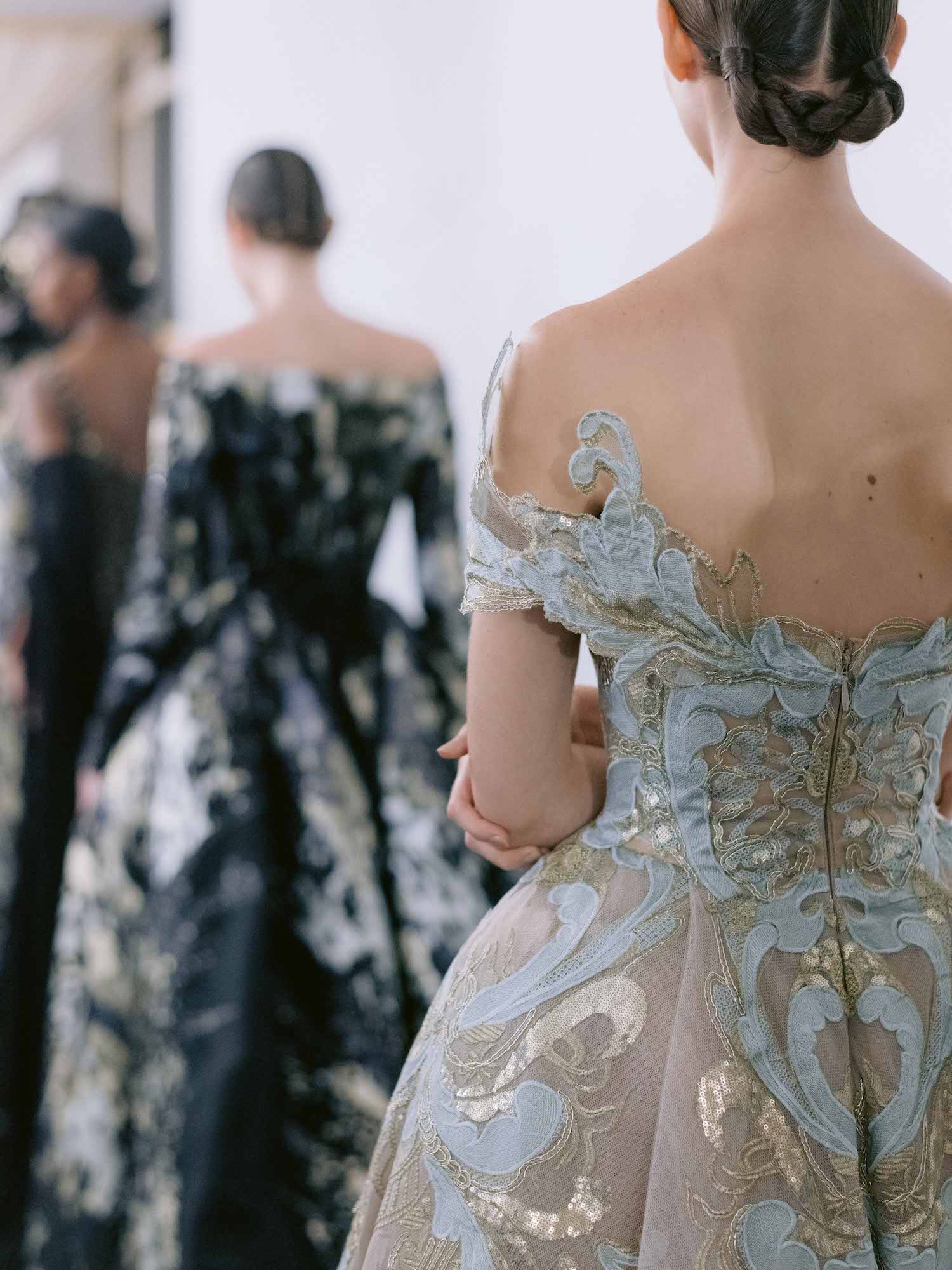
How do you both define beauty?
Elie Saab: Beauty that is reflected in the mirror. Beauty is showing who you are, without hiding behind disguises and forgetting yourself.
Elie Saab Jr: I share my father’s vision. True beauty begins on the inside and radiates outwards.


